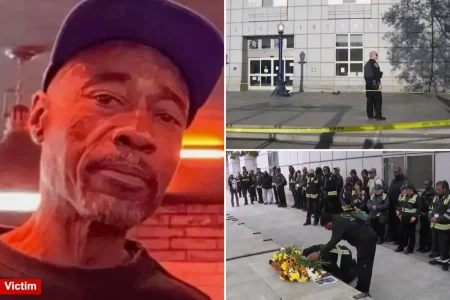Sora: OpenAI’s Video Generator Reimagined as a Social Network
In the rapidly evolving landscape of artificial intelligence, OpenAI’s latest innovation, Sora, appears to be much more than just a video-generating application. At its core, Sora represents a cleverly disguised social network poised to democratize creative AI technology while simultaneously introducing its inherent challenges to a broader audience. By transforming complex video generation capabilities into an accessible platform, OpenAI is effectively creating a new digital ecosystem where users can not only produce content but also share, engage, and build communities around AI-generated videos. This strategic positioning allows Sora to transcend its technical foundations and emerge as a potential cultural phenomenon, blurring the lines between content creation, social interaction, and technological innovation in ways previously unimagined.
The genius of Sora’s approach lies in its ability to lower the traditional barriers to sophisticated AI usage, effectively placing powerful creative tools in the hands of everyday users rather than limiting them to technical specialists. This accessibility fundamentally alters the relationship between humans and creative technology, transforming what was once a specialized technical skill into an intuitive, widely available form of expression. As users begin experimenting with Sora’s capabilities, we’re likely to witness an explosion of novel content forms and creative techniques that push beyond conventional video production methods. This democratization process mirrors earlier digital revolutions like smartphone photography or social media publishing, where technology that was once exclusive to professionals became universal, leading to entirely new cultural practices and aesthetic approaches that would have been impossible to predict before widespread adoption occurred.
However, this accessibility brings with it profound social implications that extend far beyond the technical capabilities of the platform itself. As Sora proliferates, we can anticipate the emergence of new questions about authenticity, truth, and the nature of digital creation in an era where the line between human and machine-generated content grows increasingly indistinguishable. The platform will inevitably become a testing ground for our collective ability to navigate complex issues of representation, identity, and creative ownership. Communities forming around Sora will need to develop new norms and ethical frameworks to address these challenges, potentially establishing precedents that could influence how we approach AI-generated media more broadly. The social dynamics that emerge within and around Sora may ultimately prove more transformative than the technical capabilities of the tool itself, as users negotiate the meaning and boundaries of this new creative landscape.
The integration of Sora into existing social contexts also raises important questions about how it might reshape broader patterns of digital communication and expression. As AI-generated videos become more commonplace, they have the potential to fundamentally alter how we share stories, express ideas, and connect with others online. This shift could transform everything from personal communication to entertainment, education, and marketing, creating new possibilities while potentially disrupting established industries and practices. Just as social media platforms like Instagram and TikTok created entirely new visual languages and communication styles, Sora may enable forms of expression that currently don’t exist, leading to cultural innovations that are difficult to anticipate. These emerging practices will likely reflect a complex interplay between the technical affordances of the platform, the creative impulses of its users, and the social contexts in which these new forms of expression develop and spread.
With these opportunities come significant risks that require careful consideration as Sora develops from a technical innovation into a social platform. The potential for misuse is substantial, ranging from the creation of deceptive content to the perpetuation of harmful stereotypes or the exploitation of individuals through unauthorized digital representations. As the technology becomes more widely available, the responsibility for addressing these challenges will be distributed across multiple stakeholders, including OpenAI as the platform developer, users as content creators and consumers, and potentially regulatory bodies tasked with establishing appropriate guardrails. The development of effective solutions will likely require collaborative approaches that balance innovation with protection, allowing creative exploration while minimizing potential harms. How these tensions are resolved will significantly influence not just the future of Sora but potentially the broader trajectory of AI-powered creative tools in society.
Looking ahead, Sora’s evolution as both a creative tool and a social network will likely reflect broader societal negotiations about the role of artificial intelligence in human expression and connection. As users explore its capabilities and limitations, they will collectively determine not just how the technology is used but what it ultimately means and represents in our digital culture. This process of meaning-making will extend beyond the platform itself, influencing conversations about authenticity, creativity, and the changing relationship between humans and machines across various domains. By positioning Sora as a social network rather than merely a technical tool, OpenAI has created an opportunity for these important discussions to unfold within the context of actual usage and experimentation, potentially leading to more nuanced and practical approaches to the integration of AI into our creative and social lives. The story of Sora will ultimately be written not just by its developers but by the diverse community of users who adopt, adapt, and reimagine its possibilities in ways that reflect their own values, needs, and creative visions.











